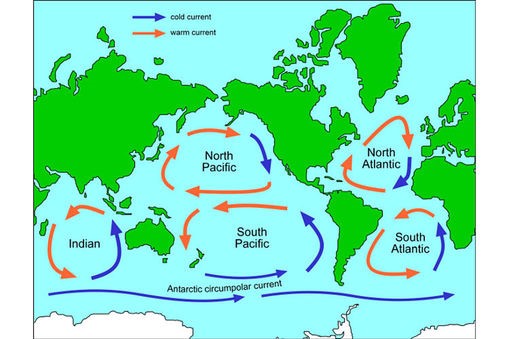PRE2016 3 Groep5: Difference between revisions
No edit summary |
No edit summary |
||
| Line 33: | Line 33: | ||
[[File:gyres.jpg]] | [[File:gyres.jpg]] | ||
Figure 1, the 5 gyres in the world | Figure 1, the 5 gyres in the world | ||
Revision as of 10:41, 12 April 2017
Group Members
| Student ID | Name |
| 0957942 | N.S.A. Messaoudi |
| 0958470 | J.J.J.B. Verstappen |
| 0955491 | C. van Otterlo |
| 0939540 | M.J.M. Smits |
| 0956810 | W.J.P. Goudriaan |
| 0953119 | J.I.A. Spapen |
introduction
Since 1945 plastic is inseparable from our society, where it brought us great fortune and great use. It is used to carry drinks, package foods, toys, etc. Whereas it has a good side that helps humanity, it also has its downsides. A lot of people throw their garbage, of which most is plastic, very easily on the ground and in rivers. This means the mainland and the oceans get polluted, instead of the plastic being recycled, when it is thrown away. On the mainland there are a lot of organizations, which focus on preserving the mainland’s environment. For example by sending people to collect waste next to roads and beaches. The amount of organizations in the seas and oceans are however, greatly outnumbered. While the organizations on the mainland can hardly keep the pollution at a steady level, the pollution in the seas and oceans has risen exponentially for several years already. The plastic in the ocean decomposes gradually which results in a highly soiled sea which is more difficult to clean up. Even when the plastic decomposes into small parts, it affects and influences the marine ecosystem as a whole. A fish cannot tell food and plastic apart and slowly gets poisoned and killed by the toxic plastic in its stomach. The same happens to many birds that get their food out of the water.
The amount of organizations in the seas and oceans are however, greatly outnumbered. While the organizations on the mainland can hardly keep the pollution at a steady level, the pollution in the seas and oceans has risen exponentially for several years already. The plastics in the ocean decompose gradually which results in a highly soiled sea which is more difficult to clean up. The small parts of plastics influence the marine ecosystem as a whole. Fish cannot tell food and plastic apart and slowly gets poisoned and killed by the toxic plastic in its stomach. The same happens to many birds that gets their food out of the water and even humans can be affected by this. If a fish gets poisoned and a human will eats that fish, then the human will also be affected by the effects.
The plastic that gets in the sea, gathers in so called ‘gyres’. These are huge area’s to which the plastic floats because of the current. It slowly floats in circles in the same area. There are 5 huge gyres around the world. See figure below.
Figure 1, the 5 gyres in the world
sources
drinkwaterzuivering:https://www.evides.nl/drinkwater/hoe-wordt-mijn-drinkwater-gemaakt
waterzuivering (idee): http://www.nationalgeographic.nl/artikel/oceanen-weer-schoon-dankzij-boyan-19
http://www.plasticsoupfoundation.org/feiten/gevolgen-voor-het-milieu/
http://www.plasticsoupfoundation.org/feiten/gezondheidseffecten/
http://www.icgrevelingen.nl/blog/2016/01/14/cleanriverproject/
Context:
http://www.boatdesign.net/forums/sailboats/speed-average-sailboat-18365.html
Milestones:
https://www.theoceancleanup.com/
http://www.tedxdelft.nl/2012/10/tedxdelft-first-performer-boyan-slat/
https://plasticsoepsite.wordpress.com/onstaan-plasticsoep/
https://www.theoceancleanup.com/technology/ Ocean clean up
http://www.wur.nl/nl/Dossiers/dossier/Plastic-afval-in-zee.htm wetenschappelijke artikelen
